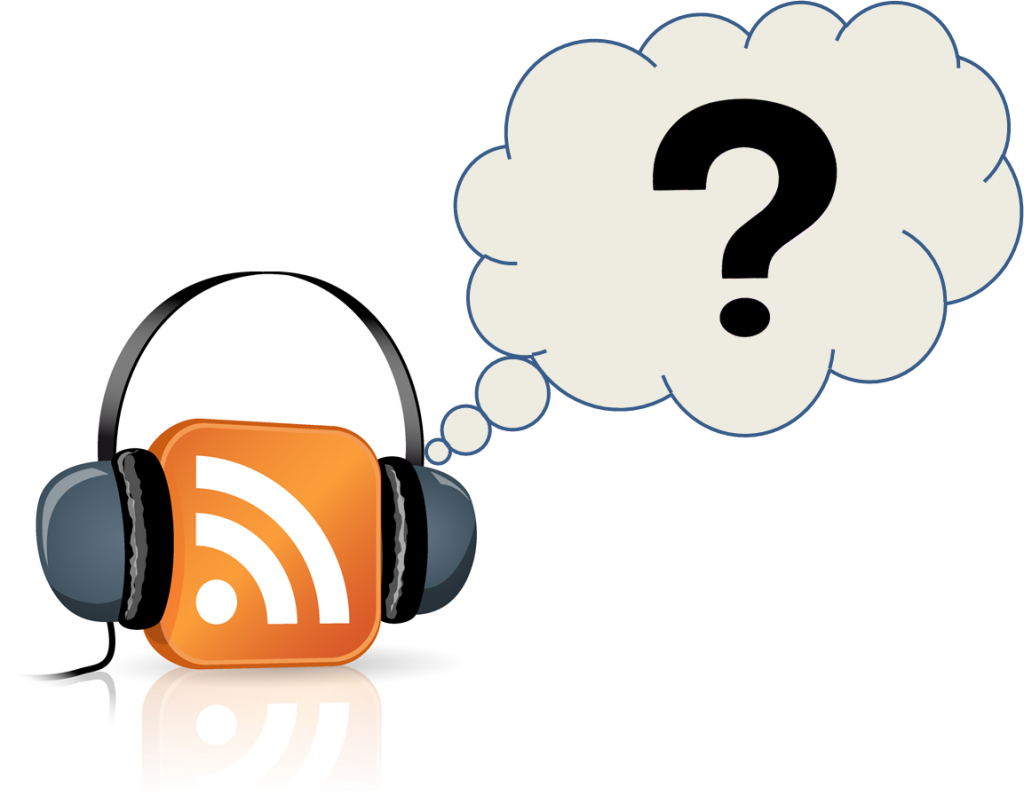 Today’s guest blogger is Jacobs Media’s Digital Dot Connector, Seth Resler.
Today’s guest blogger is Jacobs Media’s Digital Dot Connector, Seth Resler.
Seth is a committed podcaster, participating in this space for more than five years. His views on podcasting and what it needs to truly become “the next big thing” is also a frequent topic in his All Access column, “Next Steps.”
He’s also put together a series of podcasts for All Access, and is working on a similar project on the “connected car.” At DASH, he collected interviews with many of the speakers and presenters that we’ll be sharing with you in 2016.
In today’s blog post, Seth talks about the other side of podcasting – namely, revenue generation.
Advertisers Want Podcasting…Metrics
Podcasting is growing and marketers are starting to take notice. Westwood One CMO Pierre Bouvard recently previewed his company’s “State of American Podcasting” report with these bold words:
“It’s podcasting’s moment to step into the light and shine. Nearly one in five agencies and marketers ‘definitely would consider’ podcast advertising, and one out of 10 agencies and marketers say they ‘definitely would advertise’ in podcasting in the next six months.”
In fact, Pierre says the only thing preventing even more advertisers from considering podcasting is a lack of solid metrics. Citing the response of several advertisers, he says, “Measurement is the key to broad advertiser and agency adoption.”
And that takes us back to a quote from Nielsen’s Matt O’Grady at his company’s first Nielsen Audio Client Conference exactly two years ago:
“You can’t sell what you can’t measure.”
Currently, podcasting metrics come from the source where the audio files are hosted. For example, an individual podcaster would be able to look up their stats on Libsyn, Blubrry, Spreaker, Audioboom, etc. NPR, on the other hand, has its own in-house hosting which provides metrics.
But there are limitations to our current podcasting metrics. For starters, as Rob Walch, VP of Podcaster Relations at Libsyn, points out, the primary metric is downloads; and just because somebody downloaded a file doesn’t mean that she actually listened to it. Nor does it tell you how much of the episode she listened to.
Another complication is that there is no independent third party source for these metrics. An independent third party is important because, as Walch said at this year’s New Media Expo, when it comes to podcasting statistics, “Everybody lies.”
So, what third-party will provide the podcasting metrics that advertisers are looking for?
Possibility 1: Nielsen
One possible solution for the lack of reliable metrics is Nielsen’s SDK. The SDK (or “software development kit”) allows Nielsen to measure digital audio consumption. Currently, the company’s focus is to give stations the ability to measure their online streaming. But the long-term goal is clear: Nielsen wants the SDK to be the gold standard for measuring all digital audio, whether it comes from radio stations, pure-play services like Pandora and Spotify, or podcasts.
Currently, however, the SDK is limited by the fact that the code has to be installed in the audio player. That means that every place podcasts can be heard would need to support the SDK for them all to be measured, including:
- The 800-pound gorilla, Apple’s iTunes (and Podcasts app)
- Podcatchers like Stitcher and PocketCasts
- The forthcoming podcast section of Google Play Music
- Radio apps like TuneIn
- Embeddable web players like Blubrry’s PowerPress
Possibility 2: A New Player
Joshua Benton, Director of the Nieman Journalism Lab at Harvard University, recently pondered a different solution for podcasting’s analytics problem: a new proprietary audio file format that can report more data than an MP3 file. He cites the Swedish startup Acast as one company that’s developing this type of file format. Benton says that some people will be opposed to private platforms taking over.
Todd Cochrane, the CEO of RawVoice, the company behind the Blubrry hosting service, worries that these platforms may cut too deeply into podcasters’ profits: “When we hear companies taking 65 to 70 cents of the advertising dollars off the top and only leaving the talent with 30 to 35 cents of that revenue, we get concerned,” he says. “Our podcaster ad model leaves the podcaster with 70% of the gross on ad deals making it a sustainable model.”
Possibility 3: Apple and Google
While Benton is looking to small startups to provide the analytics solution for podcast advertisers, we may see it come from the opposite end of the spectrum. After all, the majority of podcast listening currently takes place on Apple gadgets. Rob Walch says over five times as much podcast listening happens on iOS devices as Android devices. And as Rob Greenlee, Head of Content for Spreaker, points out, Apple filed for a patent on “technologies for inserting dynamic content into podcast episodes” earlier this year.
In other words, Apple could inject ads into podcasts by itself. This is what it might be like if your Sony television set started inserting ads into NBC’s television shows. More importantly, as Apple Insider notes, the patent describes “powerful analytics tools that monitor ad playcounts and consumption rates for multiple users over multiple devices.”
Thus, Apple, with its iAd platform, could give advertisers everything they need to measure the performance of their ads in podcasts.
The other major player to watch, of course, is Google, who recently announced they will finally be embracing podcasting by incorporating them into its Play Music app. After all, Apple’s model of inserting ads into podcasts is similar to what Google is already doing with YouTube videos. Could Google, which has long excelled at providing companies with a platform to advertise and the analytics to measure the impact of those advertisements, be looking to enter the audio advertising space?
My Podcasting Prediction
Currently, Apple dominates the podcasting space but has room to grow in the programmatic advertising arena. Google, on the other hand, has mastered advertising but is just now (re-)entering the podcasting space. Because both companies have such a strong head start in their respective arenas, I think we’re ultimately going to see the two of them duke it out for ownership of the podcasting space.
What I learned at our DASH Conference earlier last month only reinforced my belief that audio will be a key component in the Apple/Google arms race. As automobiles incorporate more and more computer code each year, car manufacturers are turning to Apple and Google to provide the entertainment platform. And until we see truly autonomous vehicles on the road, what type of content dominates in the car?
Audio.
At DASH, I couldn’t help but notice that people kept talking not about iOS and Android “operating systems,” but iOS and Android “ecosystems.” Both companies are trying to create a unified user experience that extends well beyond just computers and phones to include cars (and watches and glasses and so on). They want to serve you — and make money off of you — during your every waking moment. And if they’re going to monetize Americans in the car, where they spend an average of 46 minutes a day, they’re going to need to get into the audio advertising business.
The trend towards analytics-driven advertising is unmistakable. Digital audio content like podcasting has lagged behind because we don’t yet have great measurement tools. But those tools are coming. Whether they come from Nielsen, Apple, Google, or a smaller startup company, when they finally get here you can expect podcasting to generate serious revenue.
Today, Seth will be hosting a panel discussion at the Nielsen Audio Client Conference titled, “Podcasting and Radio: How Broadcasters Can Engage Audiences and Generate Revenue with On-Demand Audio.” It features Nielsen’s Rob Kass, NPR’s Mathilde Piard, Libsyn’s Rob Walch, Spreaker’s Rob Greenlee, and Scripps Media’s Rob McCracken.
- A Simple Digital Treat to Thank Your Radio Listeners This Thanksgiving - November 13, 2023
- Interview Questions When Hiring Your Radio Station’s Next Digital Marketing Manager - November 6, 2023
- A Radio Conversation with ChatGPT: Part 2 – Promotions - October 30, 2023





Podcasting is a cool new trend, I like it a lot. You say that there are no analytical tools, but actually there is a number of analytical reports available on the web. For example, this slide states that 33% of US population listen to podcasts and more than 60% buy products advertised there. Of course, stats are not enough, there is a need for tools to analyse it all. By the way, isn’t it possible to use simpe web analytics tools to measure podcasts? There are plenty of them and I think that they should work. I also think that not only Apple and Google should pay attention to podcasters, but mobile developers on the whole. It is a promising market where there is still not enough tools and apps.
Beyond numbers of downloads, there is much information missing. Are people listening to the podcasts they downloads, when, where? Thanks for the comment, Alex.